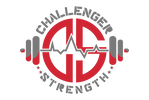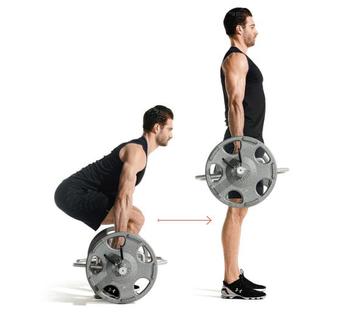|
This week I address the important cues and form considerations for an effective, safe and pain free deadlift. Implement these to ensure that you keep your form in line and most importantly avoid costly injuries to your spine.
Feet Shoulder Width Apart Now obviously you can use different deadlift alternatives such as the sumo deadlift. However, for the sake of argument, I will be explaining cues for a conventional double overhand deadlift. With that being said, lining your feet up shoulder width apart is the recommended position for the conventional deadlift. “Screw Feet Into The Floor” I would have to post videos, detail a full program with appropriate progressions and write multiple articles to explain how to get your spine neutral when deadlifting (HINT: This might be coming soon). Anyway, one of the truest ways to help maintain a neutral spine is to develop proper torque with your lower body and externally rotate your hips. Bar 1-2 Inches From Your Shins Tracking the bar close to your shins is another way to ensure proper torque creation and the ability to maintain a neutral spine or “flat back.” By doing so, you allow the shoulders to be externally rotated instead of rounded forward, and the lats can also be engaged. Double Overhand Grip For non-power lifters and beginners a double overhand grip is perfectly acceptable. This will ensure that you develop proper grip strength early on. As you progress and work towards higher weights a transition to a mixed grip in which one hand is pronated (palm up) and one hand is supinated (palm down), can be considered. “Pull The Slack Out Of The Bar” Earlier in the article I mentioned torque. Well, these next two cue help create proper torque and a neutral spine. Pulling the slack out of the bar simply means to get in your proper deadlifting position and literally pull the bar as hard as possible without moving it from the floor. Doing so allows you to set your shoulders and back properly and makes for a safer and much more efficient lift. Engage Your Lats Again, here we have a cue to help keep your spine neutral and back flat. Act as if you are performing a lat pull down and contract your lats. This will help keep your back in proper positioning while you go through the full range of motion. “Chest Up” Cuing an athlete, or even instructing yourself to keep your chest up can also significantly help with positioning and posture throughout the lift. Doing so can help you avoid a rounding of the upper back and a rolling of the shoulders forward, which is essential to a safe and pain-free deadlift. Pinch Glutes At Lockout, Do Not Hyperextend One of the main mistakes I see with the deadlift is a misconception of what is actually done at the lockout. Many lifters will hyperextend at the lower back and place far too much stress on the lumbar spine. However, the proper technique calls on glute strength and action. This is why it is so important to work glute hamstring raises and hip thrusts into your program as strong and developed glutes are pivotal at the top of the motion. Essentially, pretend you are doing a hip thrust or glute bridge at the top of the motion to properly perform a lockout and remember to squeeze those glutes to finish off your deadlift! “Leg Press The Bar Back To The Floor” Lastly, it is essential to return the bar to the floor in a safe and effective manner. Often times many lifters will not bend at the knee appropriately and instead perform more of a stiff leg or Romanian deadlift. To combat this, once the bar makes its way back to the thighs, act as if you are performing a leg press and slightly bend at the knee as you move the weight past your lower thighs and down past your knee to the floor.
0 Comments
Leave a Reply. |
AuthorSGerry DeFilippo: ISSA CPT- CPPS, AAPS. Founder/Owner: Challenger Strength. Archives
October 2020
Categories
All
|


 RSS Feed
RSS Feed